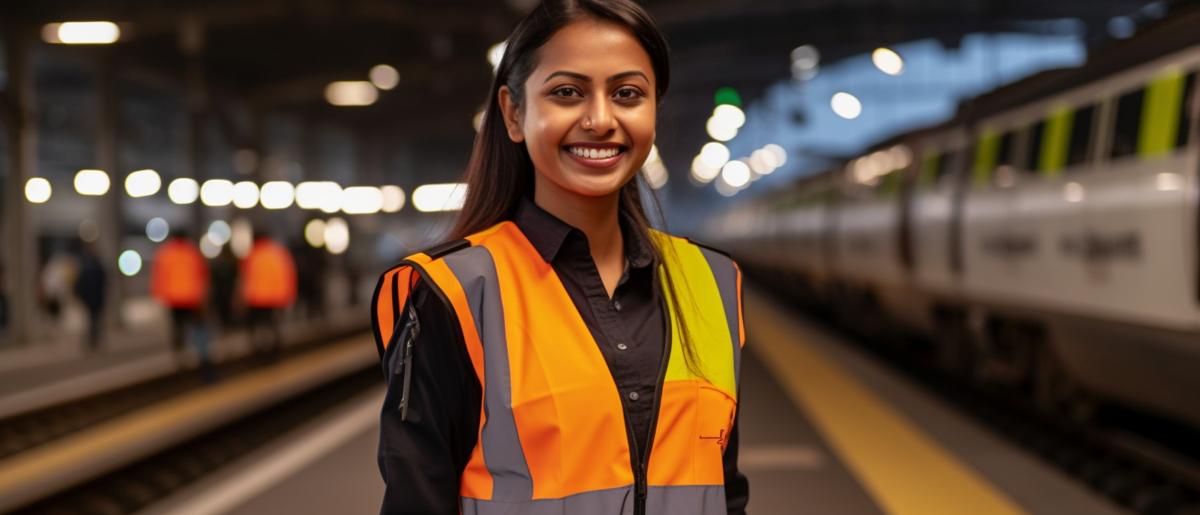

Rail Operators in Australia understand the importance of having reliable and up-to-date equipment to ensure the smooth and efficient operation of their services. Whether it's locomotives, waggons, or maintenance machinery, having the right equipment is crucial for safe and reliable rail operations. However, acquiring new equipment can often be a significant financial burden for rail operators. This is where equipment finance comes in. Equipment finance enables Rail Operators to acquire the necessary equipment without having to bear the full upfront cost. It allows them to spread the cost over time, making it more manageable for their budget. By opting for equipment financing, Rail Operators can free up their capital to invest in other critical areas of their business. One of the advantages of equipment finance is the flexibility it offers. Rail Operators can choose from various financing options, such as leasing or hire purchase, depending on their specific needs and circumstances. This flexibility allows them to tailor their financing arrangements to suit their unique business requirements. Another benefit of equipment finance is the potential tax advantages it provides. In Australia, certain equipment finance arrangements may be eligible for tax deductions, providing additional financial benefits to Rail Operators. It is essential for Rail Operators to consult with a tax advisor or financial expert to understand the specific tax implications and benefits of equipment finance for their business.
Compare over 50+ lenders with one application.
Equipment finance is a financial arrangement that enables Rail Operators in Australia to acquire the necessary equipment for their operations without needing to pay the full upfront cost. It provides a practical solution for Rail Operators who may not have the immediate capital to purchase equipment outright. The process of equipment finance involves partnering with a finance provider who specialises in offering financial solutions specifically tailored for purchasing equipment. Rail Operators can choose from various financing options, such as leasing or hire purchase, depending on their requirements and preferences. Equipment finance is designed to meet the unique needs of Rail Operators. It takes into consideration factors such as the specific equipment required, the duration of equipment usage, and the expected return on investment. By providing flexible repayment options, equipment finance allows Rail Operators to spread the cost of equipment over a specified period, making it more manageable and affordable. When entering into an equipment finance agreement, Rail Operators establish a contractual relationship with the finance provider. The agreement outlines the terms and conditions for the use of the equipment, the repayment schedule, and any additional fees or charges that may apply. These agreements are designed to protect the interests of both parties involved and ensure a smooth and transparent transaction. Overall, equipment finance is an essential tool for Rail Operators in Australia to obtain the necessary equipment for their operations while managing their finances efficiently. It offers a practical solution tailored to the specific needs of Rail Operators, helping them to optimise their operations and provide safe and reliable services.
Learn about eligibility and how to apply.
Rail Operators can utilise equipment finance to purchase various essential equipment such as locomotives, waggons, and maintenance machinery. These assets are vital for ensuring efficient and safe rail operations, allowing operators to acquire the necessary equipment while managing their finances effectively.
Here are some common types of equipment Rail Operators can purchase with equipment finance:
Locomotives
Locomotives are the backbone of rail operations, providing the power and traction needed to haul trains efficiently across the tracks.
Wagons
Wagons are used for the transport of goods and materials, ensuring the smooth movement of cargo on the rail network.
Maintenance Machinery
Maintenance machinery, including track maintenance vehicles and equipment, allows Rail Operators to ensure the safety and reliability of their infrastructure.
Signaling Systems
Signaling systems are crucial for maintaining safe and efficient rail operations, providing communication and control between trains and the rail network.
Rolling Stock Equipment
Rolling stock equipment encompasses a range of components and fittings for rail vehicles, including bogies, couplers, and braking systems.
Ticketing and Fare Collection Systems
Ticketing and fare collection systems enable Rail Operators to efficiently manage passenger bookings and payments, ensuring a smooth ticketing process.
Communication Systems
Communication systems, such as radios and dispatch consoles, play a vital role in maintaining effective communication between rail staff and ensuring the safety and coordination of operations.
Safety Equipment
Safety equipment, including safety barriers, warning signs, and protective gear, helps ensure the safety of rail staff and passengers during operations.
Inspection and Testing Equipment
Inspection and testing equipment, such as track inspection vehicles and measuring devices, are essential for monitoring and maintaining the condition of rail infrastructure.
Surveillance and Security Systems
Surveillance and security systems, including CCTV cameras and access control systems, help Rail Operators enhance security measures and ensure the safety of their operations and passengers.
Rail Operators can leverage equipment finance to drive growth by expanding their fleet, upgrading infrastructure, integrating advanced technologies, modernising rolling stock, enhancing capacity, improving ticketing systems, expanding maintenance facilities, increasing safety measures, promoting environmental sustainability, and investing in research and development initiatives. Equipment finance provides the means for Rail Operators to achieve sustainable and strategic growth in the industry.
Here are some common reasons Rail Operators use equipment finance for growth:
Fleet Expansion
Equipment finance allows Rail Operators to expand their fleet of locomotives and waggons, enabling them to cater to a growing demand for their services.
Infrastructure Upgrades
Rail Operators can use equipment finance to invest in infrastructure upgrades, such as track maintenance machinery and signalling systems, to enhance the safety and efficiency of their operations.
Technology Integration
Equipment finance enables Rail Operators to adopt advanced technologies, such as communication systems and surveillance equipment, to improve the overall performance and security of their operations.
Rolling Stock Modernization
With equipment finance, Rail Operators can upgrade their rolling stock equipment, including bogies and braking systems, to ensure optimal performance and comply with industry standards.
Capacity Enhancement
Equipment finance facilitates the acquisition of additional waggons, allowing Rail Operators to increase their capacity for transporting goods and materials, thereby meeting the growing needs of their customers.
Ticketing System Upgrades
Rail Operators can utilise equipment finance to upgrade their ticketing and fare collection systems, improving efficiency and customer experience during the ticketing process.
Maintenance Facility Expansion
Equipment finance assists Rail Operators in expanding their maintenance facilities, enabling them to provide timely and efficient maintenance services for their rolling stock and infrastructure.
Safety Enhancements
Rail Operators can use equipment finance to invest in safety equipment and systems, such as safety barriers and warning signs, enhancing the overall safety measures and reducing the risk of accidents.
Environmental Sustainability Initiatives
With equipment finance, Rail Operators can invest in eco-friendly technologies and equipment to reduce their carbon footprint and contribute to a greener transport industry.
Research and Development
Equipment finance allows Rail Operators to allocate funds towards research and development initiatives aimed at innovation and the development of new technologies, leading to continuous improvement and growth in the rail sector.
Calculate your repayment estimates and more.
Equipment finance for Rail Operators in Australia brings several advantages, enabling them to secure the necessary equipment for their operations. Here are some of the advantages:
Financial Flexibility
Equipment finance offers Rail Operators in Australia the advantage of financial flexibility. By opting for equipment financing, operators can conserve their capital and allocate their funds towards other important aspects of their business, such as maintenance, repairs, and upgrades. This enables them to have access to the latest and technologically advanced equipment without having to make a significant upfront investment.
Improved Cash Flow
Equipment finance allows Rail Operators to improve their cash flow management. Instead of making a large upfront payment, operators can choose to spread the cost of equipment over a set period through regular repayments. This helps in better financial planning and ensures a steady cash flow for other operational expenses.
Tax Benefits
Equipment finance provides tax benefits to Rail Operators in Australia. Through equipment financing, operators can potentially claim tax deductions on the interest and depreciation associated with the financed equipment. This can result in reduced tax liabilities and increased savings for the business.
Equipment Upgrades
Equipment finance allows Rail Operators to easily upgrade their equipment as technology advances or business needs change. By structuring their equipment financing agreements with the option for upgrades, operators can stay ahead of competitors by having access to the latest equipment, thereby increasing efficiency, productivity, and reducing downtime.
When considering equipment finance for Rail Operators in Australia, it's important to be mindful of a few considerations. Here are a few potential disadvantages to think about:
Financial Obligation
Equipment finance comes with the responsibility of regular repayments, which can be seen as a disadvantage for Rail Operators. Operators need to carefully consider their cash flow and ensure that they can meet the financial obligations associated with the equipment financing agreement. It is crucial to assess long-term financial stability and projections before committing to equipment finance.
Interest Rates and Costs
Rail Operators should be mindful of the interest rates and costs involved in equipment finance. While it provides financial flexibility, operators need to carefully evaluate the terms and conditions to ensure they are getting a competitive interest rate. It is important to consider the overall cost of financing the equipment and weigh it against the potential benefits gained.
Potential Depreciation
Rail Operators should consider the potential depreciation of the financed equipment. Depending on the nature of the equipment and its lifespan, there is a possibility that its value may decline over time. Operators should factor in the potential depreciation when considering the overall financial impact of equipment finance.
Non-Ownership
With equipment finance, Rail Operators do not immediately own the equipment. While this may not be a significant drawback, operators should take into account that they may not have the flexibility to sell or dispose of the equipment without the involvement of the financing company. It is essential to carefully understand and consider the terms of ownership and any limitations associated with it.
Rail operators have various equipment financing alternatives to improve their transportation services. From equipment leasing to vendor financing, these options offer flexibility to acquire locomotives, rolling stock, and maintenance equipment. By exploring these alternatives, rail operators can enhance their operations and provide efficient and reliable rail services.
Here are some common alternatives to equipment finance:
Leasing
Leasing is an equipment financing alternative that allows Rail Operators to use equipment for a specified period by paying regular lease payments. This option provides flexibility and allows operators to upgrade or replace equipment easily when needed.
Asset-Based Financing
Asset-based financing involves using equipment or assets as collateral to secure a loan. Rail Operators can obtain financing based on the value of their existing equipment or assets, providing them with access to capital while retaining ownership of the equipment.
Equipment Rental
Instead of purchasing or financing equipment, Rail Operators can consider equipment rental as an alternative. This option allows them to use the required equipment for a specific project or duration without the need for long-term ownership or financing commitments.
Vendor Financing
Some equipment manufacturers or suppliers offer vendor financing options to Rail Operators. This arrangement allows operators to finance the equipment directly through the vendor, often with competitive terms and rates, making it a convenient and seamless financing alternative.
To estimate your monthly repayments and the total cost of the loan, input the loan amount, loan term and interest rate into the calculator below. This helps you plan your budget and choose the most suitable loan terms.
These helpful FAQs will help you find the answers you need. If you can't find what you're looking for, you can request a callback below.